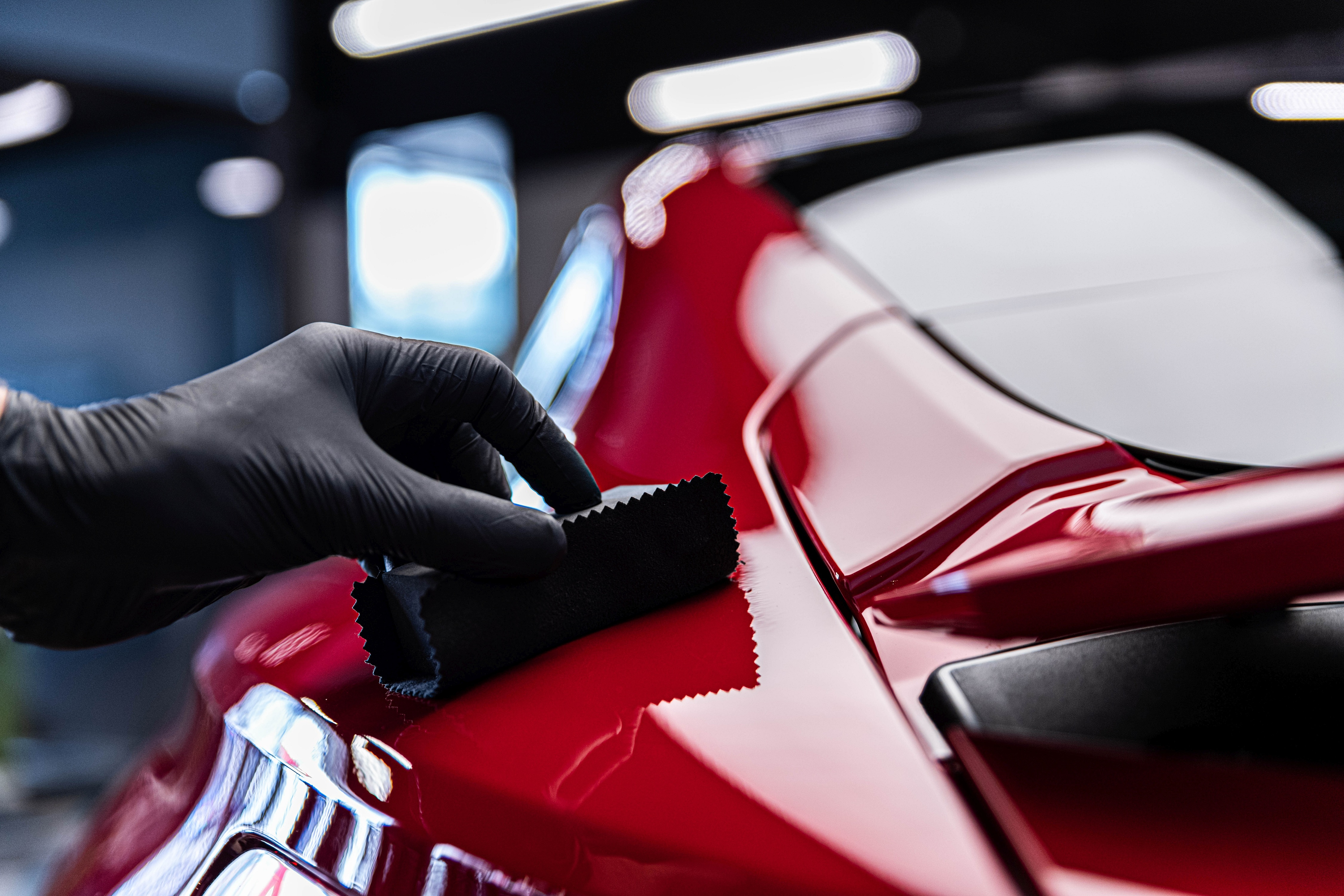
In recent years, the ceramic coating has gained popularity as a superior form of vehicle paint/exterior protection. But have you ever wondered about the science behind ceramic coating and how it is done? Well, we will get into the intricacies of ceramic coating, exploring the science behind its formulation, the application process, and the benefits it provides to your vehicle.
What Is Ceramic Coating
Ceramic coating is a liquid polymer, commonly composed of nanoparticles of silicon dioxide (SiO2) and titanium dioxide (TiO2). These nanoparticles create a protective layer that chemically bonds with the vehicle's paint, forming a durable and hydrophobic surface. The SiO2 and TiO2 molecules create a lattice-like structure that provides superior resistance to UV rays, chemicals, and environmental contaminants.
How Is Ceramic Coating Applied?
|Surface Preparation
Before applying the ceramic coating, proper surface preparation is crucial. The vehicle's paint must be thoroughly cleaned and decontaminated to remove any dirt, grime, or existing wax or sealant. This is typically done through a meticulous process involving washing, clay barring, and sometimes polishing to ensure a smooth and clean surface for the ceramic coating to adhere to.
|Application Process
Ceramic coating is usually applied in multiple layers using microfiber applicators or specialized foam applicators. The coating is spread evenly over the surface of the vehicle, one panel at a time, and allowed to bond with the paint. The coating then cures and hardens, forming a transparent and protective layer. Depending on the brand and product used, multiple layers may be applied to achieve maximum protection and durability.
|Curing and Bonding
Once the ceramic coating is applied, it undergoes a curing process that typically takes 24-48 hours. During this time, the coating chemically bonds with the vehicle's paint, forming a permanent and durable protective layer. This bonding process ensures long-lasting protection against UV rays, oxidation, chemical damage, and minor scratches.
Benefits of Ceramic Coating
Ceramic coating provides numerous benefits for your vehicle. Firstly, it offers exceptional protection against UV rays, which can cause fading and damage to the vehicle's paint over time. Secondly, it creates a hydrophobic surface, making it easier to clean and maintain. The water-repellent properties also help prevent water spots and mineral deposits. Additionally, the ceramic coating provides a glossy and smooth finish, enhancing the overall appearance of the vehicle and making it more resistant to dirt and contaminants.
If this article caught your attention and you would like to ceramic coat your car, 26th Street Auto Center is here to help! We have some of the best mechanics and ceramic coating experts in the state, and we are proud to work with top-ranking products on the market. Don't waste time and book an appointment today!